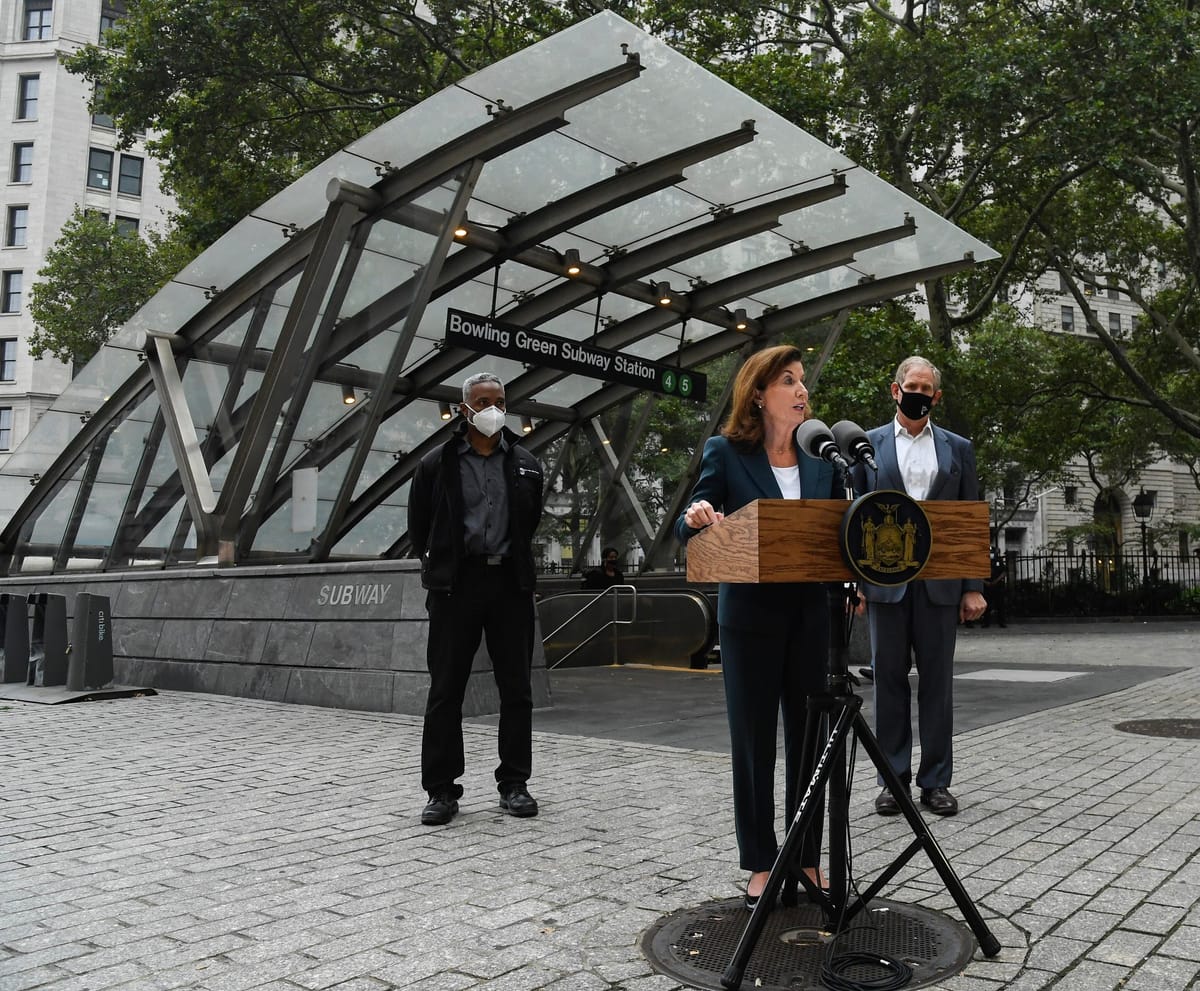Sunday Night Subway Shutdown Caused by Power Surge and Alert System Snafu, Review Finds
A major subway service disruption that saw service on at least eight lines severely curtailed was caused by a power anomaly and a failed alert system.

Governor Kathy Hochul holds a briefing and press conference with officials at MTA Headquarters on August 30, 2021. (Image: Marc A. Hermann / MTA)
A major subway service disruption that saw service on at least eight lines severely curtailed was caused by a power anomaly and a failed alert system.
That’s according to the preliminary findings of a review ordered by Governor Kathy Hochul this morning after a chaotic Sunday night.
Residents across the reported brief power issues that evening. But they weren’t the only ones having issues.
“There is extremely limited service on 1 2 3 4 5 6 7 L while we investigate a power surge affecting much of New York City,” the New York City Transit Subway tweeted just after 9:30pm on Sunday. “If possible travel on lettered lines (not the L) or buses.” Officials were unable to make station platform announcements on those lines, leaving some riders stranded with no knowledge of what was going on.
The series of events that led to the disruption, which has since been remedied, began after Con Edison experienced “a power anomaly” at 8:25pm that temporarily interrupted power to subway signals and communications, according to the Metropolitan Transportation Authority’s (MTA) review. The surge impacted the numbered lines as well as the L train, the agency said
Immediately after, a battery-powered backup system kicked into gear to keep the system fully operational, the MTA said. The system is designed to return to Con Edison power when it becomes available, the agency said, but this time, that didn’t happen.
An alert system that is supposed to notify subway management of power issues was not operating properly. As a result, managers believed that systems were operating normally, when in fact the batteries continued to power the system for approximately 45 minutes.
At 9:14 pm, the batteries, which are not designed to provide long-term power, ran out. That’s when things got hairy.
“Let me be very clear, last night was unacceptable,” newly-minted Governor Kathy Hochul, who controls the MTA, said at a press event with transit leaders in Manhattan Monday morning. “If you were one of those riders, or people relying on safe transport, the system failed you.”
About 83 trains were affected by the power blip, according to officials, including five that were stuck between stations, according to transit officials.
Riders on two of those trains were evacuated where they stopped, while another was brought to a station platform. But on the two other trains, some riders independently walked along the tracks to escape. That prompted responders and MTA workers to search the tunnels for any remaining straphangers, which caused further delays.
Service was restored at around 1:30 am on Monday.
Hochul said two engineering firms would conduct an independent review of what occurred and make recommendations for any changes to minimize the chances of something similar happening again.
“My message to the riders is this: We are working to find out the full extent of what went wrong, and we will fix it,” the governor said in a statement published this afternoon. “New Yorkers deserve absolute confidence in a fully functioning subway system, and I promise to do everything in my power to restore that confidence."





